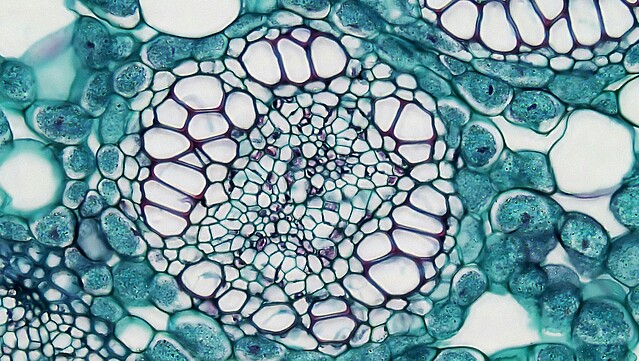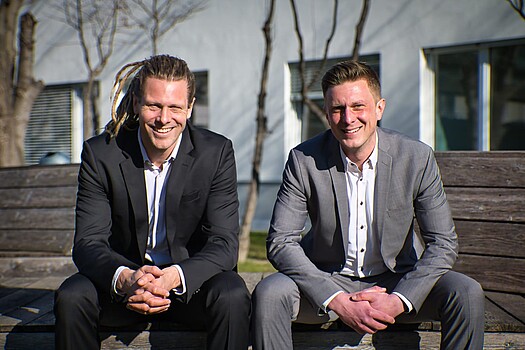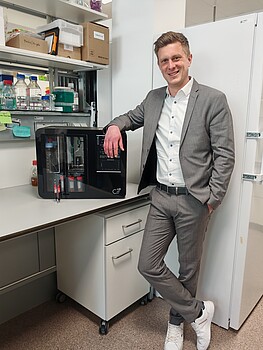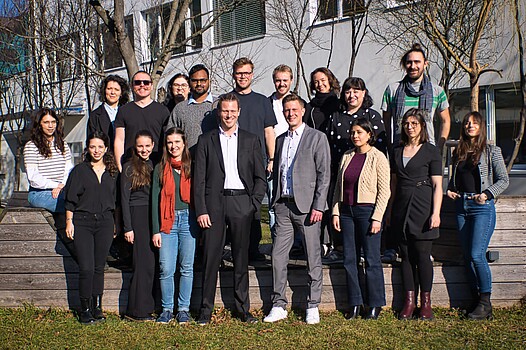Cellectric Biosciences: Upgrading Dr. Frankenstein
May 5, 2025|NH
Zapping toward a life sciences revolution
Never throw a toaster into the bathtub: humans and high voltage don’t mix. Yet cellular life is itself electric. On a molecular level, life is powered and controlled instant-to-instant by minute electrical signals. This means that electromagnetic fields can be used to initiate, destroy and even reprogramme cellular parts and processes. The trick is to apply the right forces at the right frequency to achieve the desired outcome; to generate electrical field effects without tossing the toaster in the bath, so to speak.
Deeptech startup Cellectric Biosciences has figured out how to do it, and their patented technology might just change medicine forever. The key is in understanding the electrome, a concept that conveys the entirety of a body’s bioelectrical activity, whether it be a single cell or a whole person.
“Imagine life as an orchestra playing a symphony,” explained Klemens Wassermann in an interview with ViennaBusiness. “Genomics and proteomics [the study of genes and proteins, respectively -ed.] looks at each individual musician and studies what they are doing in order to understand how they form the symphony. The real question is: who is the conductor? The conductor is the electrome, the electric spark of life, the electric fingerprint of the cell. If you control the conductor, you can tell the orchestra to play this symphony or that symphony.”
Cellectric Biosciences has figured out how to control the conductor without frying the orchestra – with game-changing implications for diagnostic and therapeutic medicine. “It’s going to be the next revolution in life science,” he said.
"Imagine life as an orchestra playing a symphony. The conductor is the electrome, the electric spark of life, the electric fingerprint of the cell. If you control the conductor, you can tell the orchestra to play this symphony or that symphony.”
One blue M&M
Wassermann’s startup journey started while he was doing PhD research at AIT Austrian Institute of Technology on sepsis diagnosis, figuring out how doctors could more rapidly identify life-threatening blood infections.
“Take an Olympic-sized swimming pool of red M&Ms and find the single blue M&M in it,” said Wassermann. The current method for diagnosis is to take a sample and wait until the ‘blue M&Ms’ have multiplied enough to become obvious.
Wassermann had a more radical idea: blow up all the red ones and see if any blue were left. “A mathematical theory I found said that electromagnetic fields should be cell-type specific, so I figured out that I could selectively rupture all human cells [in the sample]. They would dissolve so that only blue remains.”
It worked – and Wassermann was convinced that his theoretical work needed to go into application. He gave up job opportunities in academia and in patent offices to pursue his startup dream.
“Companies don’t take over early stage technologies [any more],” explained Wassermann. “You need to take the risk and go through the valley of death before companies will get into it. People told me I have this entrepreneurial spirit. Lots of people nudged me and gave me the confidence to get started.”
Supervising his first PhD student Terje “T.J.” Wimberger, things started to fall into place. “He is super smart and an unbelievable scientist,” Wassermann recalled. “And at some point, he said he wanted nothing to do with anything in the life science space except this ‘electromagnetic stuff’.” The two co-founded Cellectric Biosciences in 2021, which has now grown to a team of around 20 scientists with expertise on everything from molecular biology to electrical engineering.
Shocking stuff
The company now holds patents on a specific lab set-up that enables targeted electromagnetic field effects to be applied to liquid samples while withholding damaging electrical currents. Using empirical testing – trying stuff until it routinely works – they have figured out which “settings” are needed to rupture various kinds of human cells, while leaving others untouched – and are working on an electrical cell atlas that will one day serve as a kind of recipe book for diagnostics and therapy at a cellular level.
Electrome manipulation, says Wassermann, is set to change the future of medicine. “It’s going to shed a completely new light on life science and what is possible. It’s so broadly applicable: you can use it for diagnostics, for therapy, for bioprocessing and synthetic biology. It’s going to be a completely new way to work with cells with new opportunities,” Wassermann said.
Fans of Star Trek may recall the Tricorder, the handheld device that the series’ spacefaring doctors use to scan patients for an instant diagnosis. If Wassermann has his way, future applications could work just like that. Electromagnetic manipulation of cells “allows a digital biology, because you take the same hardware and need only software changes to feed in different electromagnetic fields – it’s a digital solution to life sciences that makes processes more scalable, more selective, faster, and automatable.”
“Paradise” for life science startups
Wassermann credits Vienna for paving the way for the startup’s early progress.
“First of all, in the startup and early stage it’s a paradise in Austria because of really good funding,” raves Wassermann. Cellectric Biosciences received funding from local institutions including Austria Wirtschaftsservice (aws), the Austrian Research Promotion Agency (FFG) and European institutions, as well as investment from the Vienna-region VC xista science ventures.
The team comes from 14 different countries, and most moved here for the job. “I say it’s because of our culture, vision and technology, but also because of the city of Vienna. It really attracts talent because of the high quality of life.”
He praises the city’s “research institutes, infrastructure, collaboration potential – there is a strong life science cluster and really high level of academia, especially for those of us doing interdisciplinary stuff. We can’t cover everything [in house], but we see huge potential to diversify and scale up.”
“Being in the centre of Europe helps as well,” he adds. “So do the high standard of living and the name Vienna has as one of the most attractive, politically stable cities.”
"In the startup and early stage it’s a paradise in Austria because of really good funding."
Amped for the future
Cellectric Biosciences is getting the company name out there and evangelising on the potential of electrical biomedicine, gathering national and international startup and tech awards and working with major players in the health industry. Over the next three to five years, the company is looking to become the key international player for rethinking routine life science processes, by entering the market in infection diagnostics, scaling up production and scaling the company to become an enabler in a broader spectrum of applications.
In other words, the future of bioscience is electrifying.



